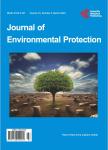Analysis of Economic Efficiency of Wildlife Law Enforcement in Serengeti Ecosystem Tanzania
Analysis of Economic Efficiency of Wildlife Law Enforcement in Serengeti Ecosystem Tanzania作者机构:Department of Wildlife Management College of Forestry Wildlife and Tourism Sokoine University of Agriculture Morogoro Tanzania Department of Forest and Environmental Economics College of Forestry Wildlife and Tourism Sokoine University of Agriculture Morogoro Tanzania
出 版 物:《Journal of Environmental Protection》 (环境保护(英文))
年 卷 期:2023年第14卷第7期
页 面:538-560页
学科分类:0202[经济学-应用经济学] 02[经济学] 020205[经济学-产业经济学]
主 题:Serengeti Ecosystem Wildlife Law Enforcement Data Envelopment Analysis
摘 要:Law enforcement remains to be the main strategy used to combat poaching and account for high budget share in protected area management. Studies on efficiency of wildlife law enforcement in the protected areas are limited. This study analyzed economic efficiency of wildlife law enforcement in terms of resource used and output generated using three different protected areas (PAs) of Serengeti ecosystem namely Serengeti National Park (SENAPA), Ikorongo/Grumeti Game Reserves (IGGR) and Ikona Wildlife Management Area (IWMA). Three years (2010-2012) monthly data on wildlife law enforcement inputs and outputs were collected from respective PAs authorities and supplemented with key informant interviews and secondary data. Questionnaire surveys were conducted to wildlife law enforcement staff. Shadow prices for non-marketed inputs were estimated, and market prices for marketed inputs. Data Envelopment Analysis (DEA) was used to estimate economic efficiency using Variable Return to Scale (VRS) and Constant Return to Scale (CCR) assumptions. Results revealed that wildlife law enforcement in all PAs was economically inefficient, with less inefficiency observed in IWMA. The less inefficiency in IWMA is likely attributed to existing sense of ownership and responsibility created through community-based conservation which resulted in to decrease in law enforcement costs. A slacks evaluation revealed a potential to reduce fuel consumption, number of patrol vehicles, ration and prosecution efforts at different magnitudes between studied protected areas. There is equal potential to recruit more rangers while maintaining the resting time. These finding forms the bases for monitoring and evaluation with respect to resource usage to enhance efficiency. It is further recommended to enhance community participation in conservation in SENAPA and IGGR to lower law enforcement costs. Collaboration between protected area, police and judiciary is fundamental to enhance enforcement efficiency. De



